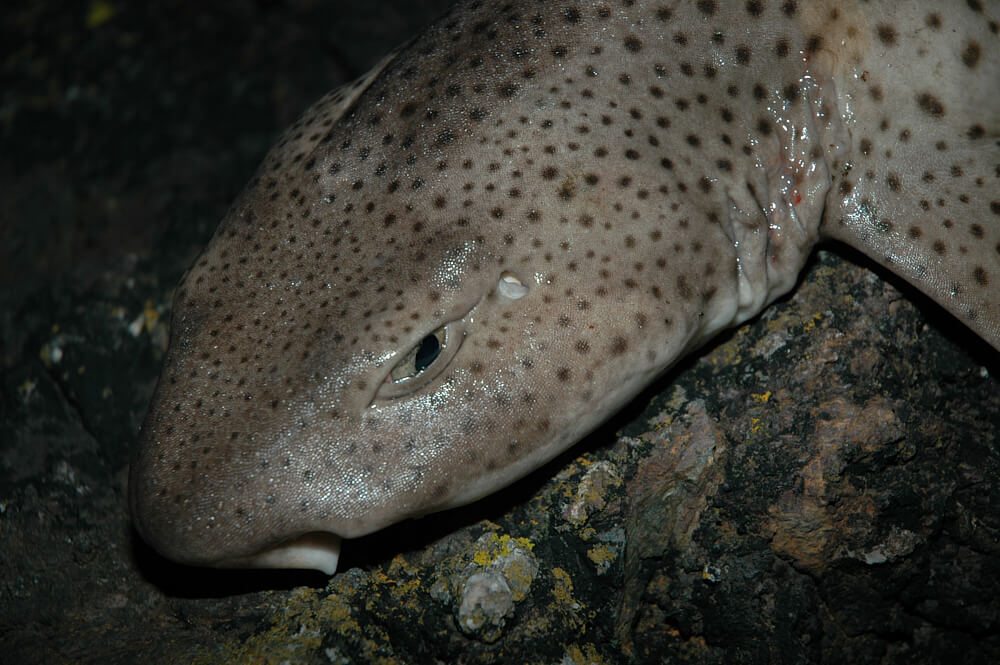Bull huss are a marmite fish. You either love them or hate them. But for the shore angler, they offer a very achievable target fish over 10lbs. They are found mainly along the western facing coast of the UK but are found all around Ireland.
They average between 5lbs and 9lbs, but bigger fish to 14lbs, and occasionally larger, are always on the cards.
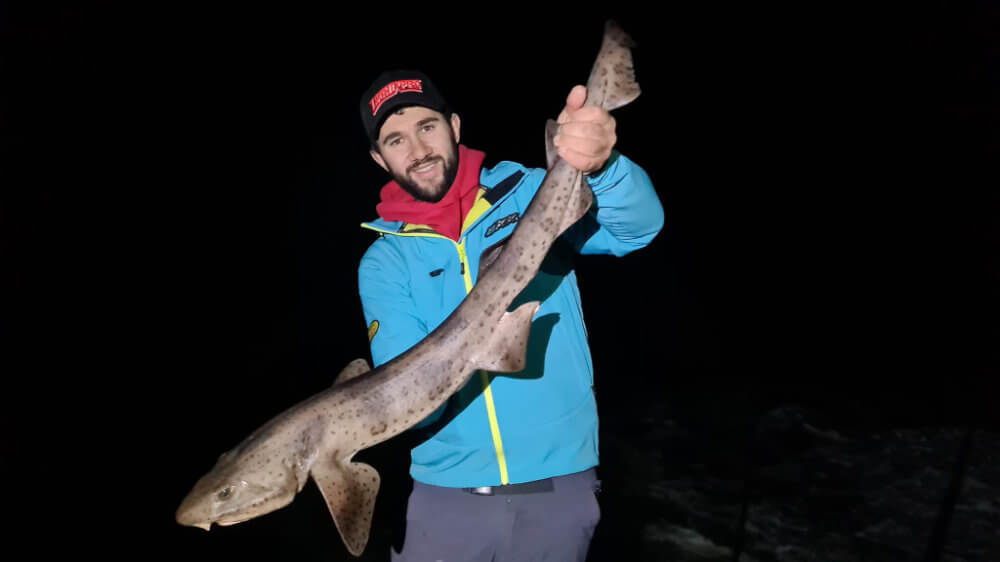
Season
When fishing rock ledges into deep water, huss can be taken throughout the full 12-month period. Their numbers thin out usually between April to June, but by mid-summer their numbers will quickly grow, peaking inshore during the period September to February. However, if there is prolonged cold weather with minus temperatures that quickly drop the sea temperature in the November/December period, then this can push the fish out deeper earlier.
Habitat
They are lovers of rocky ground, especially areas where large boulders have fallen from the surrounding cliffs into water over 20-feet deep. They frequent areas where natural shelfs of rock and small pinnacles rise off the seabed, as these see smaller fish congregate to provide a food supply. They also favour kelp weed beds and will work through these looking for smaller bait fish.
A good thing to bear in mind is that they are often found in numbers near newly set lobster and crab pots. They are attracted to the area by the baits in the creels and will stay in the area for several tides and typically in good numbers.
Huss are nomadic and will wander far and wide during a tide and can be taken on shallow rough ground surf beaches having come in from deeper water, especially at night. Also, off piers and breakwaters that drop on to rougher ground, and they will feature in some larger estuaries, especially in the west of Ireland where they hunt the weed lines along the channel edges.
Weather and Tides
On the deep-water rock ledges, some life in the sea with a noticeable ground swell will see them more active and hunting for food. But very rough seas tend to push the huss out to deeper water if the tight inshore depth is less than 25ft or so. A light to moderate onshore breeze is ideal and in daylight puts a good chop on the sea surface to reduce light entering the water and this helps improve your chances. Bright daylight is less reliable, but fish can still be caught, especially in deeper water. Generally, an overcast sky will fish best by day, but the better catches invariably come at night in the dark.
If you’re targeting huss in shallower water off a rough ground surf beach, then stick the night tides for the best results.
Their movements and feeding habits are naturally affected by the tides. On the rock ledges in deeper water, the tides have less effect, so if you’re fishing depths exceeding 40-feet, then feeding times will tend to be spread with the 2nd hour of the flood a good time as they like the period when the tide is just picking up, but with individual fish likely right through the flood tide. Slack water periods are usually quiet as there is little tidal flow to carry the scent of the baits very far for the huss to come across. In this deeper water, the ebb tide can also produce a few fish.
In shallower water, feeding times will be shorter and tend to concentrate around the 2nd and 4th hour of the tide, when the flow is not at its peak. When the tide is flowing strongly, expect the huss to be taking cover behind rocks, under ledges and inside weed beds where the flow is deflected and reduced.
Much depends on the ground you’re fishing and how the tides flow over it. If the tide flow is slow and predictable, then the bigger tides with more movement tend to fish the best. In areas where tide flow is strong, then fish the smaller neap tides when tide flow is reduced. All marks are different, and some experimentation is always needed to find the optimum tides and conditions.
One thing you can do in your favour is to try to pick tides when low water falls in the dark. The fish will move tighter inshore on these and tend to feed with more purpose.
Huss Fishing Tackle
Rods need to be 13 to 14ft in length and rated either 5-6ozs or 6-8ozs. Our go-to rod for huss fishing is the Tronixpro Competition Naga, followed buy the Xenon Power and Banzai Power. These are powerful rods capable of casting bigger baits and bring bigger fish through rough ground.
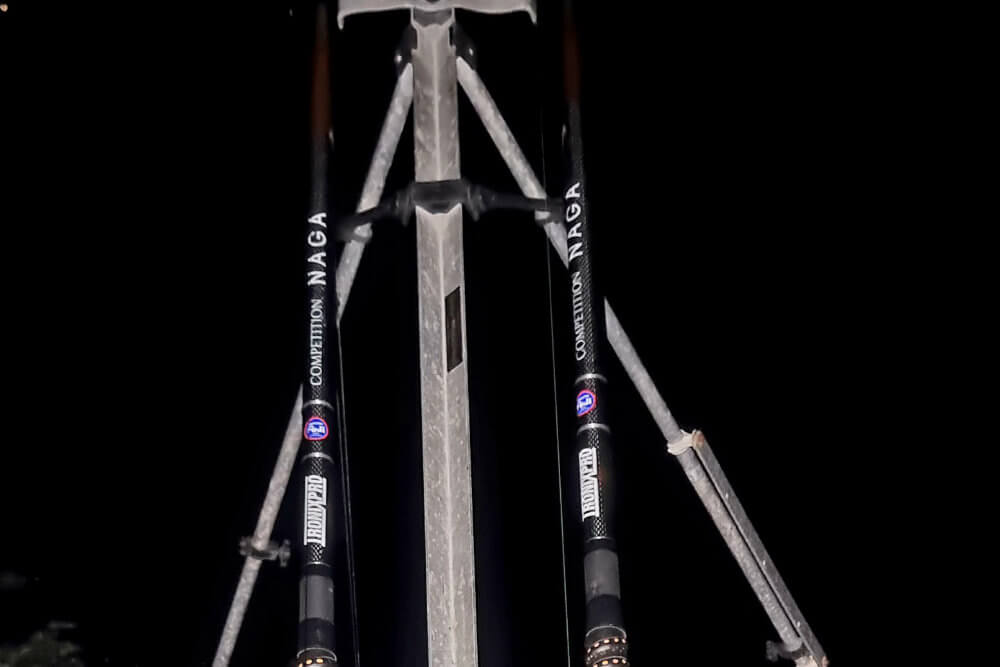
Over recent years, there’s been a swing from multipliers to large, fixed spool reels for rock fishing. The bigger 8000 fixed spools like the Tronixpro Xenon DV8 can retrieve line much quicker. Load these big reels with Tronixpro X8 Power Braid in 50lb braid and add a 60/80lb Xenon Shockleader.
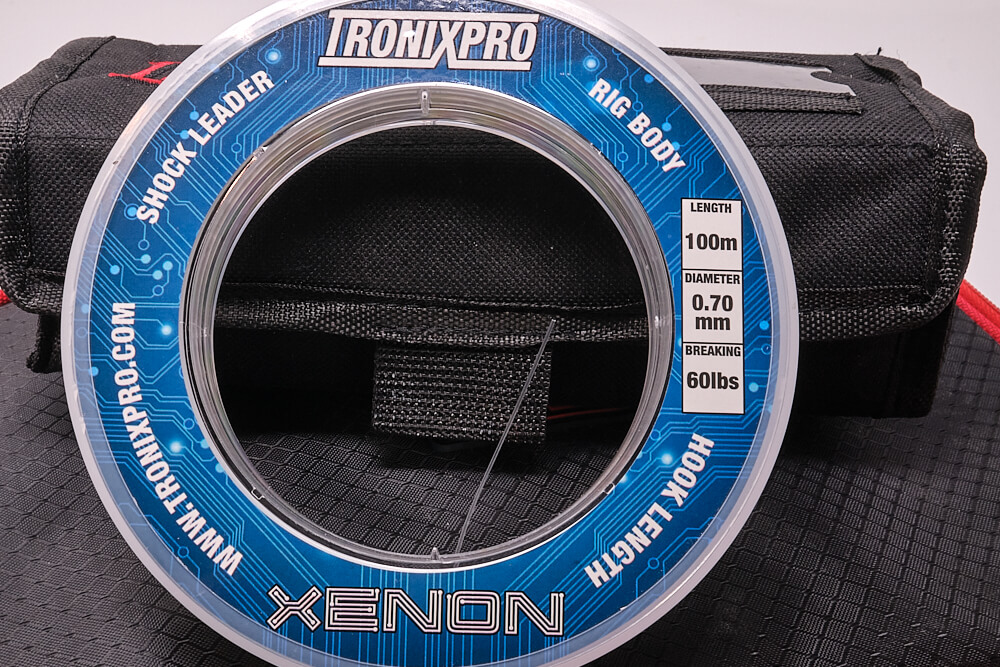
If you want to fish with a multiplier, then most anglers will go for a reel around the 6500 size loaded with 20lb Axia Monofilament and a 60lb Xenon Shockleader when fishing at distance. These smaller reels need to have strength in the gearing for this type of fishing. If you’re more comfortable with a larger reel and want to fish in extreme rough ground, then reels in the 7000 / 30 size are the way to go, loaded with 30lb Axia Monofilament and a 60lb Xenon Shockleader.
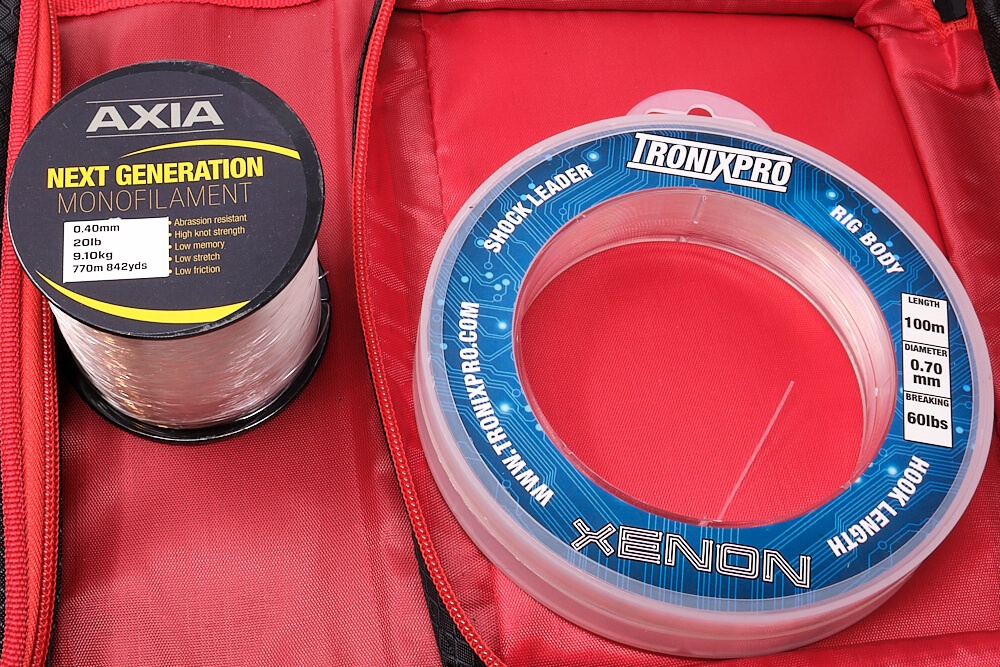
The best rig for huss off the shore is a simple pulley rig. Take a 50-inch (127cm) length of 80lb Xenon Leader. At one end, tie on a Tronixpro Big Bait Casting Snap. Now slide on a 5mm bead, a Tronixpro Pulley Bead, and another 5mm bead. Measuring up from the tag end of 80lb line, at 22ins (56cm) tie in a figure-of-eight knot to form a stop for the top bead to butt up against. On to the tag end, slide on a Tronixpro Crimp, a size 3mm rig bead and an 8mm bead, then tie on a size 6/0 Tronixpro Beast Hook. Crimp the 3mm and 8mm beads in place about 2ins (5cm) above the hook by tightening the crimp. The crimp and beads act as a bait stop to stop the bait flying back up the trace on the cast.
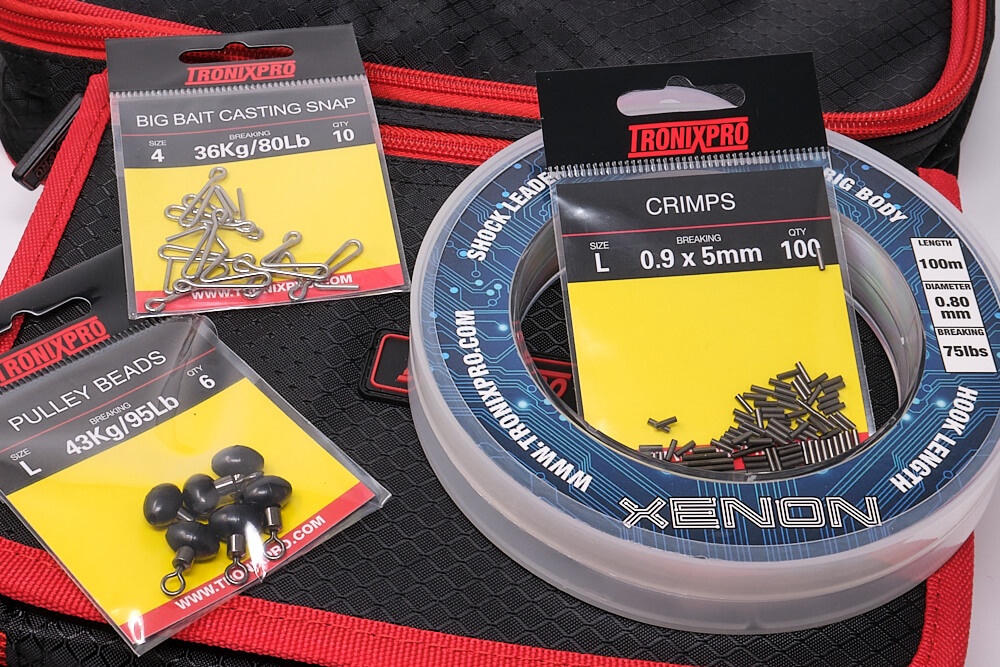
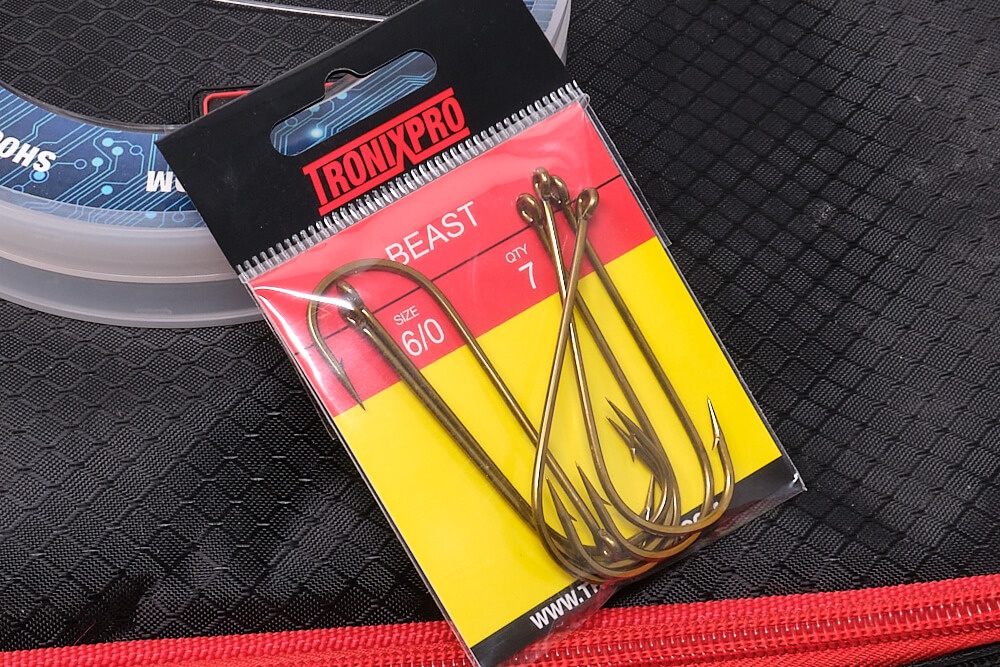
Built like this, the hook trace when placed in the snap link clip will be tight, but will release when the lead weight hits the water.
You can add a sacrificial lead element to this lead by simply adding an upside-down standard Tronixpro Casting Snap, clipping it into the tied on Big Bait Casting Snap. Tie a short length of 15lb mono to the body of the Big Bait Casting Snap, then tie the tag end to the eye of the lead. For casting, put the eye of the lead onto the clip hook of the upside-down clip. This casts normally but when the weight hits the sea, the weight comes off the hook, leaving it attached only by the weak 15lb line which will break if the lead snags in rocks.
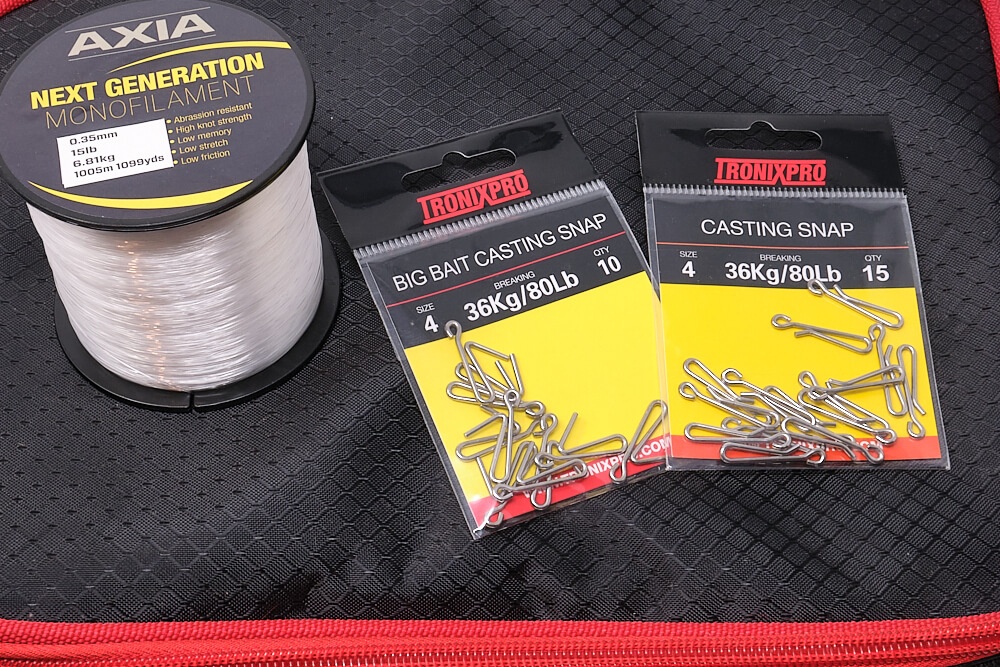
Huss Baits
Huss are primarily predators and therefore are fish eaters. The top baits are mackerel, herring, bluey, squid, sandeel, with smaller baitfish such as rockling, pout and poor cod the best of the natural baits.
A common mistake is to make the baits too big. Even a half a normal-sized mackerel is too big for the average huss to quickly swallow. The ideal bait size is about 4ins (10cm) in length, but oozing lots of natural blood and juices. Go bigger, and you’ll get the huss tugging and pulling at the bait, but not necessarily taking it fully in. These smaller baits also cast further.
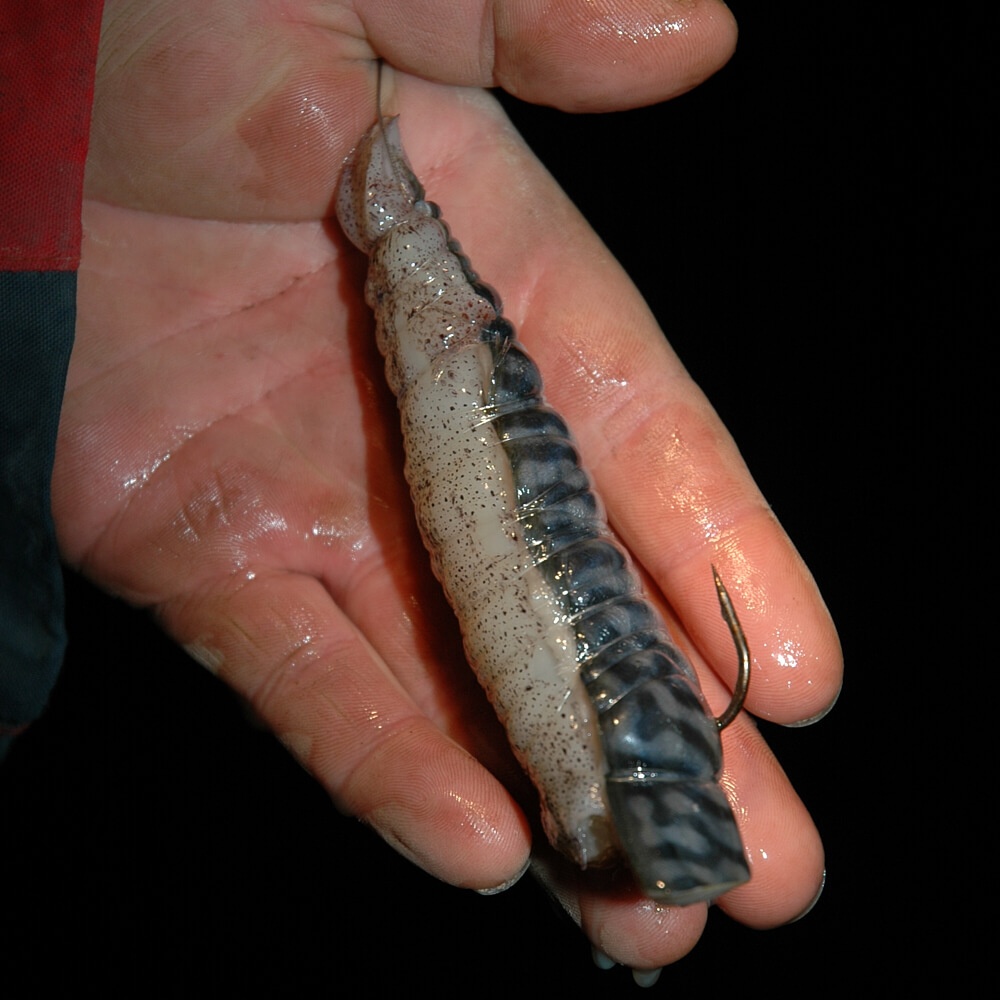
Methods
Take the time to vary your casting distances and fan the casts out from left to right. Doing this will help you locate small areas of seabed where you will notice you get regular bites from huss. Huss are quite predictable and seek specific ground where they like to feed each tide.
The more experienced anglers will fish two rods for huss, having one out at range and one closer in. Often, the huss will hug the base of the rock platforms you’re standing on, and longer casts may not be as effective. Two rods cover all options.
Huss have a shark like smell and can track weak scented baits down easily. You can leave a big fish bait out for 25 to 30 minutes if it’s well wrapped with bait elastic and let it give off its scent to travel well downtide to find the fish.
Huss bites are rarely savage. You’ll normally see the rod tip bounce two or three times, then a pause, then another couple of bounces. Don’t pick up the rod yet. Wait until the rod tip pulls fully over as the fish tries to swim away with the bait, then pick up the rod, retrieve any slack line until you feel the fish, then pull the hook home. Huss have a habit, especially with baits that are too big, of holding the bait in their mouth, allowing themselves to be brought in some way, then simply letting go of the bait, the hook being nowhere near finding a purchase in the mouth. By striking on a tight line, you minimise this happening.
Once you feel the weight of the fish, then keep it coming up in the water column by repeated upwards pumps of the rod while retrieving line as you drop the rod. They often have one last dive when right at the base of the rocks, so be prepared for this.
